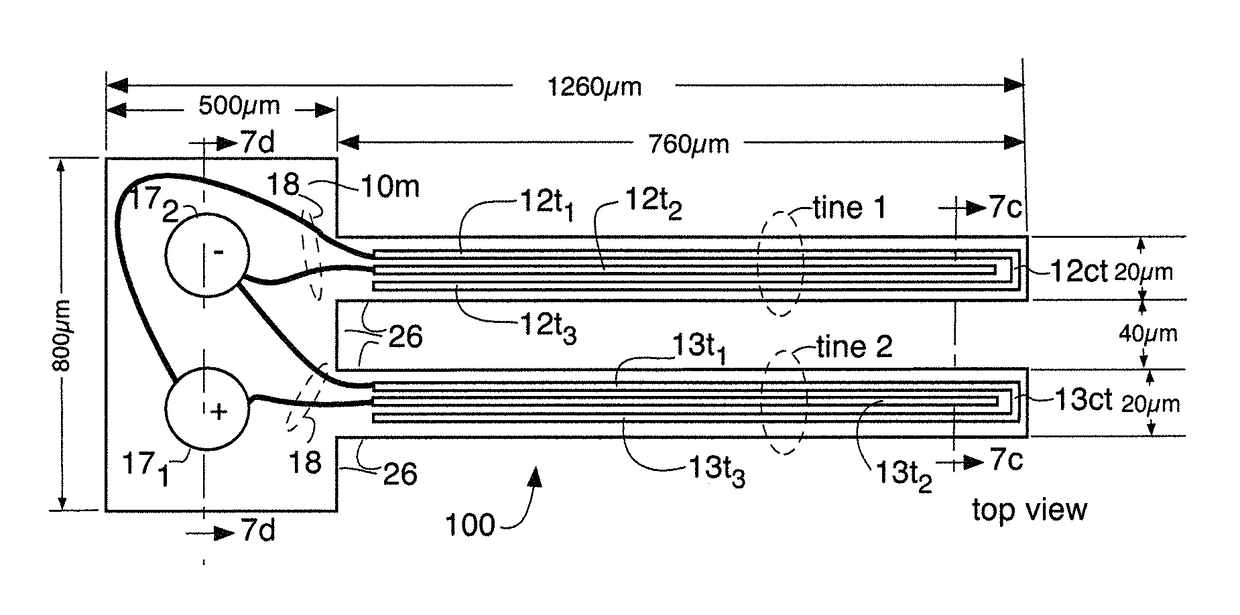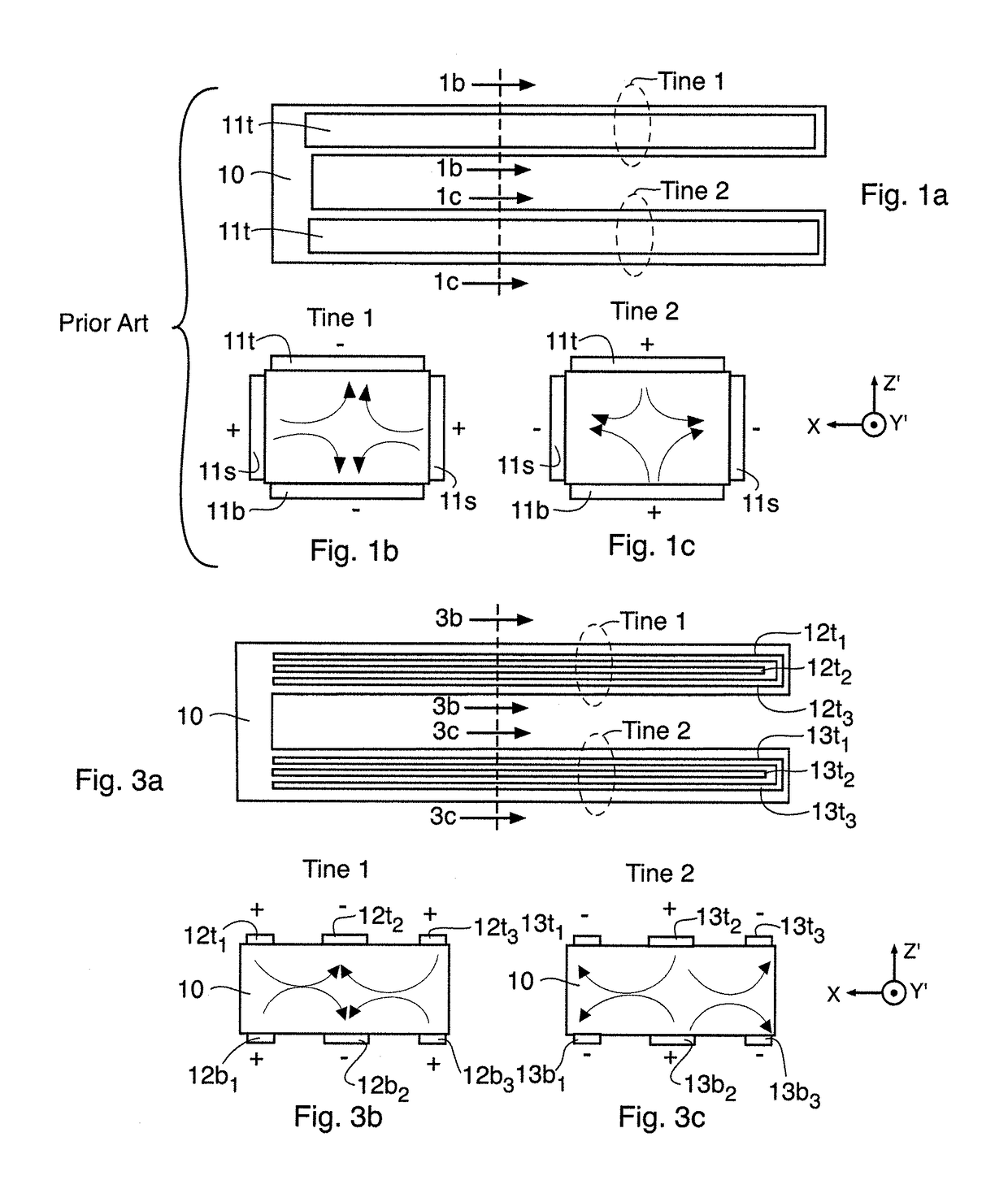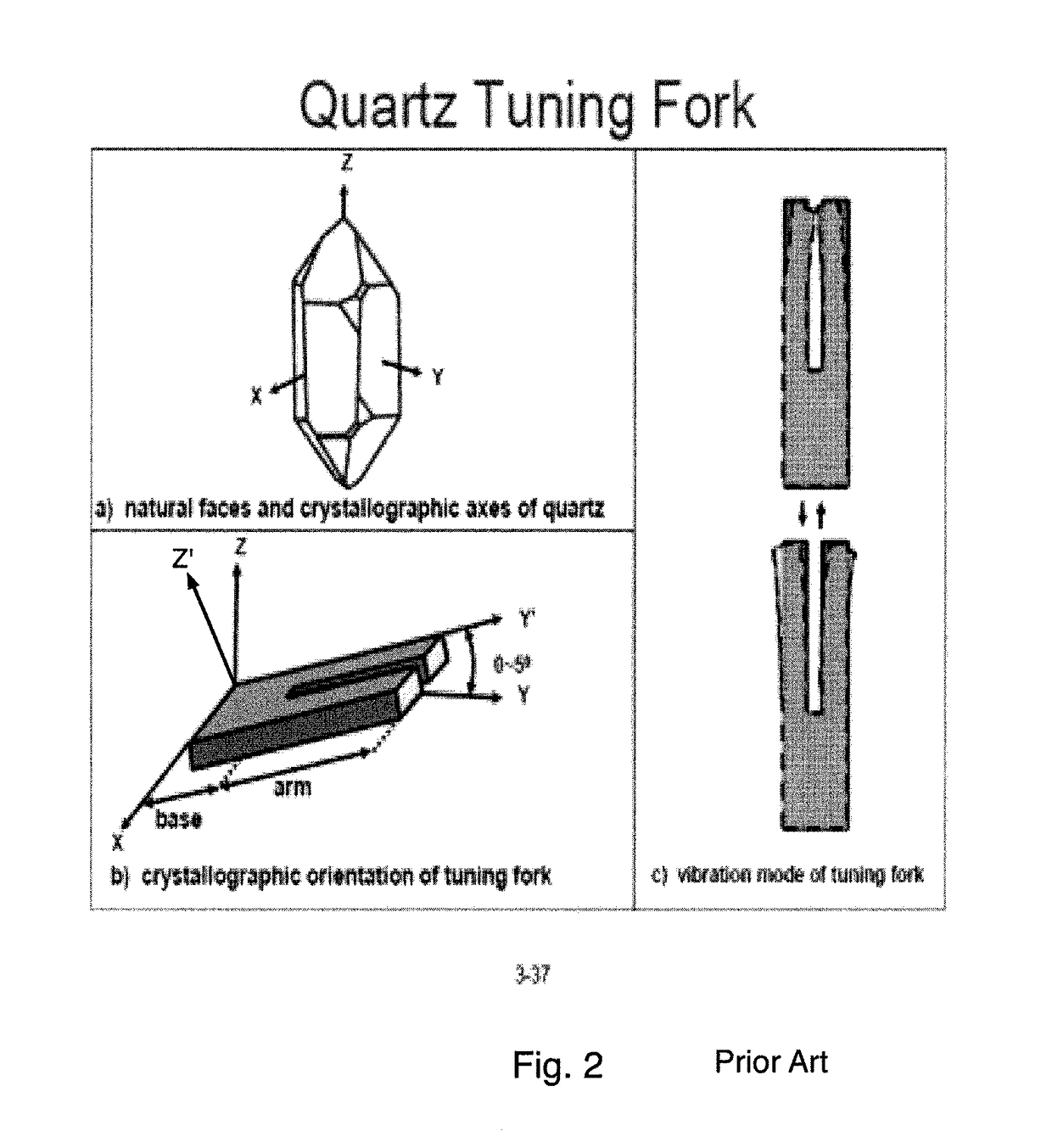Integrated quartz MEMS tuning fork resonator/oscillator
a technology of tuning fork resonator and quartz, which is applied in the direction of piezoelectric/electrostrictive devices, device material selection, piezoelectric/electrostrictive devices, etc., can solve the problems of reducing accuracy, increasing the power of the overall system, and difficult implementation of prior art techniques
- Summary
- Abstract
- Description
- Claims
- Application Information
AI Technical Summary
Benefits of technology
Problems solved by technology
Method used
Image
Examples
Embodiment Construction
[0024]A detailed description follows. Common reference numerals are for multiple embodiments where the reference numerals refer either to identical or nearly identical structure in the various embodiments or to structure which performs identical or very similar functions in the various embodiments.
[0025]For the cut angle shown in part b) of FIG. 2 of quartz (commonly called a Z-cut), the component of the electric field in the +X direction produces a contraction in the dimension in the Y′ length of the tines while the component of the electric field in the −X direction produces an extension in the dimension in the Y′ length of the tine. Thus, in both the prior art tuning fork resonator of FIGS. 1a-1c and the tuning fork of the present invention as exemplified by the embodiment of FIGS. 3a-3c, a tuning fork vibrational mode is generated for the two tines which reduces acoustical energy loss to the mounts and yields a high Q or quality factor. By fabricating the tines using plasma etch...
PUM
 Login to View More
Login to View More Abstract
Description
Claims
Application Information
 Login to View More
Login to View More - R&D
- Intellectual Property
- Life Sciences
- Materials
- Tech Scout
- Unparalleled Data Quality
- Higher Quality Content
- 60% Fewer Hallucinations
Browse by: Latest US Patents, China's latest patents, Technical Efficacy Thesaurus, Application Domain, Technology Topic, Popular Technical Reports.
© 2025 PatSnap. All rights reserved.Legal|Privacy policy|Modern Slavery Act Transparency Statement|Sitemap|About US| Contact US: help@patsnap.com



